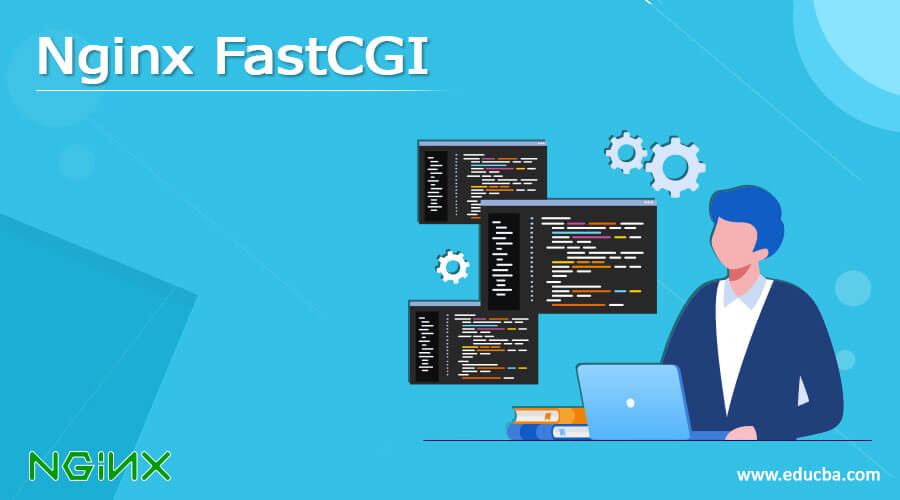FastCGI, a powerful web server technology, revolutionizes the way web applications interact with servers. It acts as a bridge between web servers and application processes, enabling efficient communication and improved performance. Unlike traditional CGI (Common Gateway Interface), which requires a separate process for each request, FastCGI maintains persistent processes, minimizing overhead and boosting responsiveness.
FastCGI operates by establishing a persistent connection between the web server and the application, allowing requests to be handled quickly and efficiently. This persistent connection eliminates the need for repeated process initialization and termination, resulting in significant performance gains, especially for high-traffic websites.
How FastCGI Works

FastCGI is a protocol that enables web servers to communicate with application programs efficiently. It establishes a persistent connection between the web server and the application, allowing for faster processing of requests. This approach contrasts with traditional CGI, where each request initiates a new process, leading to significant performance overhead.
The Communication Process Between a Web Server and a FastCGI Application
FastCGI communication involves a two-way interaction between the web server and the application. The web server acts as a client, sending requests to the FastCGI application, which acts as a server. This communication happens through a socket, which is a communication endpoint.
- The web server receives a request from a client, such as a user’s browser.
- The web server forwards the request to the FastCGI application through the established socket connection.
- The FastCGI application processes the request and generates a response.
- The response is sent back to the web server through the same socket connection.
- The web server then delivers the response to the client.
The Role of the FastCGI Process Manager
The FastCGI process manager plays a crucial role in managing the lifecycle of FastCGI applications. It handles the following tasks:
- Starting and stopping FastCGI applications: The process manager launches and terminates FastCGI applications as needed, ensuring their availability and resource management.
- Monitoring application health: It continuously monitors the health of FastCGI applications, restarting them if they encounter errors or become unresponsive.
- Managing application instances: The process manager controls the number of FastCGI application instances running, adjusting the count based on server load and resource availability.
Step-by-Step Breakdown of the Request Handling Process Using FastCGI
Here’s a detailed breakdown of how a request is handled using FastCGI:
- Client request: A user’s browser sends a request to the web server, for example, requesting a specific webpage.
- Web server receives request: The web server intercepts the request and determines that it needs to be processed by a FastCGI application.
- Web server connects to FastCGI application: The web server establishes a connection to the FastCGI application through a socket, either directly or through a process manager.
- Web server forwards request: The web server forwards the request to the FastCGI application through the established socket connection.
- FastCGI application processes request: The FastCGI application receives the request and performs the necessary actions, such as retrieving data from a database, executing scripts, or generating dynamic content.
- FastCGI application generates response: The FastCGI application generates a response based on the request processing.
- FastCGI application sends response: The FastCGI application sends the response back to the web server through the socket connection.
- Web server receives response: The web server receives the response from the FastCGI application.
- Web server delivers response to client: The web server delivers the response to the client’s browser, completing the request handling process.
Performance Considerations: Fastcgi
FastCGI can significantly improve the performance of your web server. However, achieving optimal performance requires careful configuration and optimization. This section will delve into the impact of FastCGI on web server performance, identify factors affecting its performance, and offer best practices for optimization.
Process Management
Process management plays a crucial role in FastCGI performance. The number of FastCGI processes running concurrently can directly affect resource utilization and responsiveness. If too few processes are running, the web server may experience delays as it waits for available processes to handle requests. Conversely, running too many processes can lead to excessive resource consumption, potentially impacting overall system performance.
Here are some factors related to process management that can affect FastCGI performance:
- Process Pool Size: The number of FastCGI processes running simultaneously. This number should be carefully tuned to balance resource consumption and request handling capacity.
- Process Lifetime: The duration for which a FastCGI process remains active. Longer lifetimes can reduce the overhead of process creation and destruction, but they can also lead to memory leaks if not managed properly.
- Process Restart Policy: How and when FastCGI processes are restarted. This can be configured to ensure processes are refreshed periodically, reducing the risk of memory leaks and performance degradation.
Resource Allocation
Efficient resource allocation is essential for optimizing FastCGI performance. This includes managing memory usage, CPU utilization, and network bandwidth.
Here are some factors related to resource allocation that can affect FastCGI performance:
- Memory Usage: FastCGI processes can consume significant amounts of memory, especially when handling complex applications or processing large amounts of data. Proper memory management techniques, such as caching and object pooling, can help minimize memory usage.
- CPU Utilization: FastCGI processes rely heavily on CPU resources for processing requests. Optimizing code for efficiency and utilizing multi-core processors can help improve CPU utilization.
- Network Bandwidth: The amount of data transferred between the web server and FastCGI processes can impact performance. Minimizing unnecessary data transfers and utilizing efficient communication protocols can improve network bandwidth utilization.
Best Practices for Optimizing FastCGI Performance
- Tune Process Pool Size: Experiment with different process pool sizes to find the optimal balance between resource utilization and request handling capacity. Monitor system performance metrics, such as CPU usage and memory consumption, to identify the ideal pool size.
- Implement Caching: Cache frequently accessed data to reduce the need for repeated computations or database queries. This can significantly improve response times and reduce server load.
- Optimize Code: Write efficient code that minimizes resource consumption. Use profiling tools to identify bottlenecks and optimize code for better performance.
- Utilize Asynchronous Operations: Implement asynchronous operations to allow the server to handle multiple requests concurrently without blocking. This can significantly improve performance, especially for applications that involve long-running operations.
- Enable Compression: Enable compression for data transferred between the web server and FastCGI processes to reduce the amount of data transmitted over the network.
- Monitor and Analyze: Regularly monitor system performance metrics, such as CPU usage, memory consumption, and request handling times. Analyze these metrics to identify areas for optimization and ensure FastCGI is performing efficiently.
Future of FastCGI
FastCGI, a mature and reliable technology, continues to play a vital role in the web development landscape. Its ability to handle high-traffic websites efficiently and its compatibility with various programming languages make it a valuable tool for developers. However, the evolving web development landscape presents both challenges and opportunities for FastCGI.
Emerging Trends and Technologies
The future of FastCGI is intertwined with emerging trends and technologies shaping the web development landscape. These trends, such as serverless computing, containerization, and the rise of new programming languages, will influence the adoption and evolution of FastCGI.
- Serverless Computing: Serverless computing platforms like AWS Lambda and Google Cloud Functions offer a flexible and scalable environment for web applications. While FastCGI is traditionally associated with traditional server environments, its principles of process management and communication can be adapted to serverless architectures. This could lead to the development of FastCGI-compatible serverless runtimes or frameworks, enabling developers to leverage the benefits of serverless computing while maintaining compatibility with existing FastCGI applications.
- Containerization: Containerization technologies like Docker have revolutionized software deployment by providing a consistent and portable environment for applications. FastCGI can be easily integrated into containerized environments, allowing developers to package and deploy FastCGI applications with their dependencies. This promotes portability, scalability, and simplified deployment processes.
- New Programming Languages: The emergence of new programming languages like Go, Rust, and Kotlin, with their focus on performance and concurrency, could lead to increased adoption of FastCGI. These languages often have built-in support for concurrency and asynchronous programming, which are essential for handling high-traffic websites. As FastCGI provides a framework for managing concurrent requests, it can effectively complement these languages, enabling developers to build efficient and scalable web applications.
Timeline of FastCGI
The timeline of FastCGI reflects its evolution from a niche technology to a widely adopted standard.
| Year | Event | Impact |
|---|---|---|
| 1996 | FastCGI is first introduced. | It provides a more efficient and robust alternative to CGI. |
| 2000s | FastCGI gains widespread adoption. | It becomes a standard for web servers like Apache and Nginx. |
| 2010s | Serverless computing and containerization emerge. | These technologies offer new opportunities for FastCGI. |
| 2020s | Continued adoption and integration with emerging technologies. | FastCGI is expected to remain a relevant technology in the future. |
Closing Notes
FastCGI’s ability to enhance web server performance, streamline development workflows, and bolster security makes it a valuable asset for modern web applications. As web technologies continue to evolve, FastCGI’s role in optimizing web server efficiency and scalability is poised to become even more prominent.



